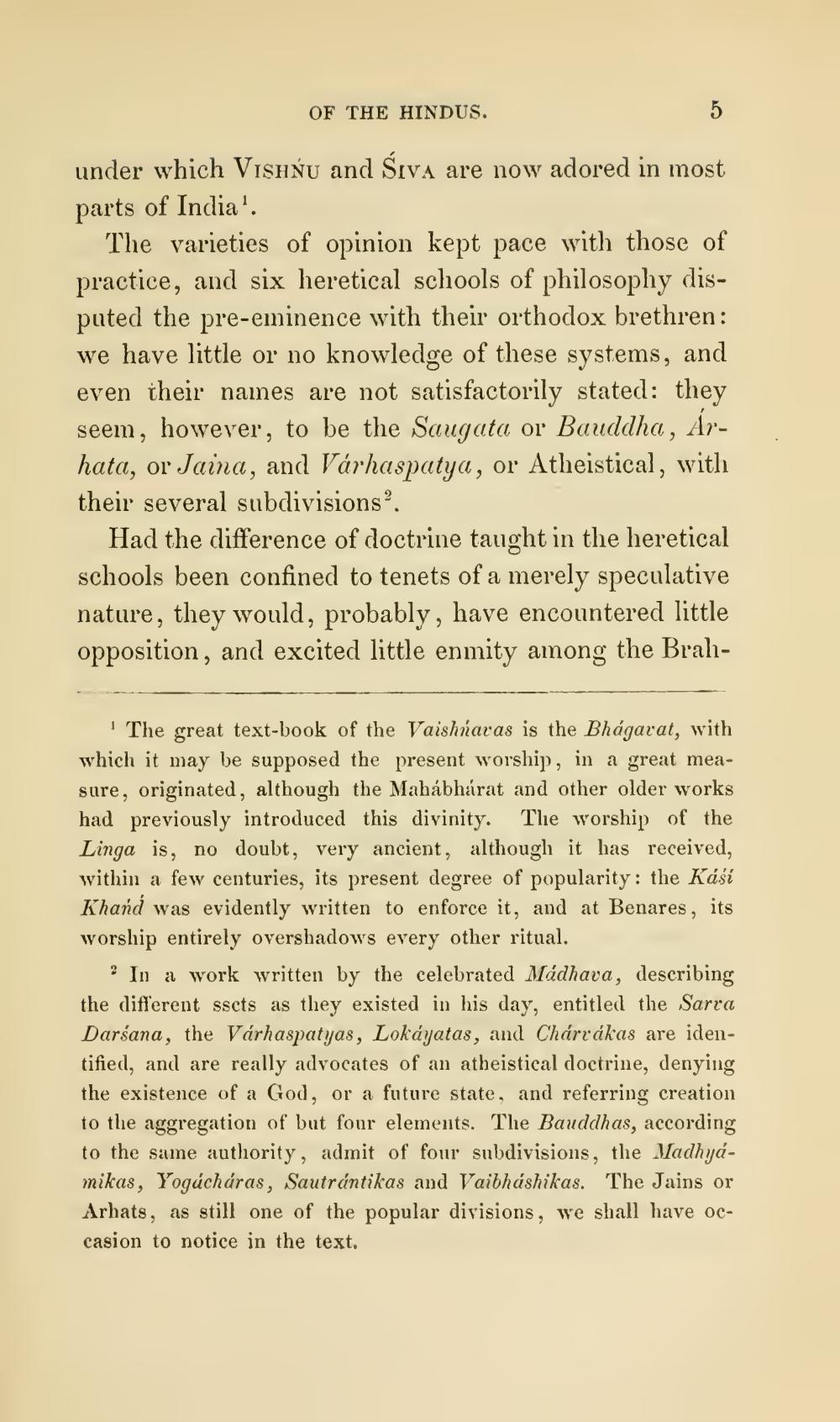________________
OF THE HINDUS.
under which VishŃU and Siva are now adored in most parts of India'.
The varieties of opinion kept pace with those of practice, and six heretical schools of philosophy disputed the pre-eminence with their orthodox brethren: we have little or no knowledge of these systems, and even their names are not satisfactorily stated: they seem, however, to be the Saugata or Bauddha, Arhata, or Jaina, and Várhaspatya, or Atheistical, with their several subdivisions.
Had the difference of doctrine taught in the heretical schools been confined to tenets of a merely speculative nature, they would, probably, have encountered little opposition, and excited little enmity among the Brah
The great text-book of the Vaishiaras is the Bhagarat, with which it may be supposed the present worship, in a great measure, originated, although the Mahábharat and other older works had previously introduced this divinity. The worship of the Linga is, no doubt, very ancient, although it has received, within a few centuries, its present degree of popularity: the Káší Khand was evidently written to enforce it, and at Benares, its worship entirely overshadows every other ritual.
? In a work written by the celebrated Madhava, describing the different sscts as they existed in his day, entitled the Sarra Darsana, the Várhaspatyas, Lokayatas, and Chárrákas are identified, and are really advocates of an atheistical doctrine, denying the existence of a God, or a future state, and referring creation to the aggregation of but four elements. The Bauddhas, according to the same authority, admit of four subdivisions, the Madhyamikas, Yogácháras, Sautrántikas and Vaibhashikas. The Jains or Arbats, as still one of the popular divisions, we shall have occasion to notice in the text.




